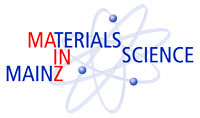


Physikalisches Kolloquium
Nov. 13, 2012 at
5 p.m. c.t.
in
Hörsaal des Instituts für Kernphysik, Becherweg 45
Prof. Dr. Friederike Schmid
Institut für Physik
friederike.schmid@uni-mainz.de
Prof. Dr. Hartmut Wittig
Institut für Kernphysik
hartmut.wittig@uni-mainz.de
The (colloidal) physics of bacteria
Prof. Dr. Wilson Poon (School of Physics & Astronomy, University of Edinburgh, Scotland)
A bacterium is the smallest 'quantum' of autonomous living matter. Their physical dimensions mean that they are colloids. But they are 'active colloids' in that they transduce free energy from their environment, and use the energy to engage in intrinsically non-equilibrium activities such as growth and self-propelled motion ('swim'). Until now, the biophysical study of bacteria has concentrated on intra-cellular processes. In this talk, I will introduce an emerging field of biophysics in which the focus of attention is on whole bacterial cells considered as active colloidal particles; experimental methods and theoretical ideas from soft matter physics are then used to give insights into the behaviour of single cells (e.g. how they swim in magnetic fields) and of multiple cells (e.g. the shape of colonies and the mode of aggregation). Experiments using well-characterised bacteria in turn show new phenomena not previously seen in passive colloids. Accounting for these phenomena satisfactorily will need fundamental advances in statistical mechanics.